

Today is 520, and I'm looking for love-related fNIRS studies to share with you.
Since the 1990s, the neural mechanism of love has become one of the research hotspots in psychology and other fields.
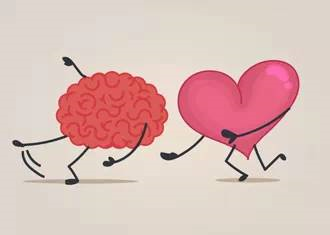

Early researchers oftenRevealing the neural mechanisms of love by comparing differences in brain activation patterns when looking at photos of loved ones and familiar friends. The study found thatWhen looking at a photo of a loved one, it activates the core brain areas of the reward systemThis supports the idea that love is related to reward and motivation, and it also suggests thatLove is not a specific emotion, but a reward, a motivation.... Overall, it has been proven that love can have a significant impact on people's brains, and "these changes in love-related brain regions must have an impact on a variety of behaviors and thoughts.



Neural Mechanisms of Couples Enhancing Love Relationships through Conflict
In our daily lives, we often use the "fight is pro, scolding is love" to flirt with the small quarrels between couples, so as to illustrate that couples will inevitably exist in the relationship between the conflict, and these conflicts are not necessarily bad, and sometimes on the contrary, it will help to enhance the love relationship.So what happens in the brains of couples during conflict that makes their love relationship not only not weakened, but further enhanced?



Chunming Lu's group at the State Key Laboratory of Cognitive Neuroscience and Learning, Beijing Normal University, published inCerebral CortexJournal research paper, Interpersonal Conflict Increases Interpersonal Neural Synchronization in Romantic Couples.discoveriesHigh arousal (i.e., emotional intensity) in couples' conflict interactions enhances synchronization of brain activity between couples, which in turn enhances the strength of the love relationship between couples.
The study recruited 22 couples and 22 heterosexual friends. During the course of the experiment, each couple or opposite-sex friend completed separate discussion tasks on supportive, neutral and conflictual topics(Figure 2a-b). The study used an ultra-scanning technique based on near-infrared spectroscopic imaging (fNIRS) to simultaneously measure the functional brain activity of two subjects in each group (Fig. 2c).
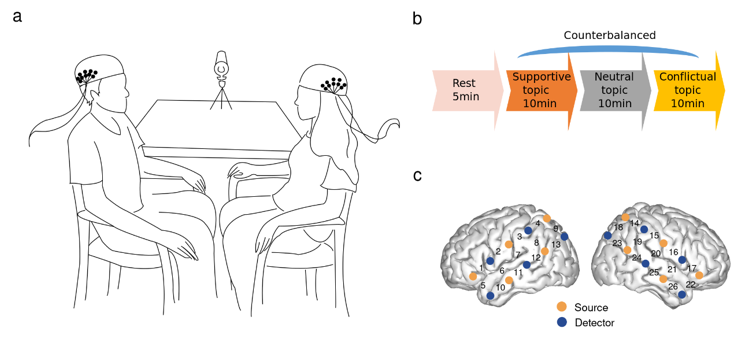


pass (a bill or inspection etc)natural language processing (NLP) technology, which analyzed the emotions of natural speech during couple interactions, found thatConflicting topics induced stronger emotional arousal in both the couple and friend groups. Analyses based on brain activity synchronization revealed a female-preferred synchronization of brain activity that was highly consistent with that of males after 4 seconds. In particular.This brain synchronization was significantly higher when couples were discussing conflicting topics than when they were discussing supportive topics. The opposite pattern emerged among heterosexual friends, i.e., discussing supportive topics induced stronger brain synchronization compared to discussing conflicting topics (Figure 3). And.Synchronization of brain activity between couples is significantly correlated with physiological signals based on skin electrical resistance and the level of arousal of the couple(Figure 4). In addition.There was a significant positive correlation between the synchronization of this brain activity and the perceived strength of the love relationship in women.These results suggest that couples' high arousal in conflict situations induces stronger synchronization of brain activity, which in turn enhances the strength of the couple's love relationship.
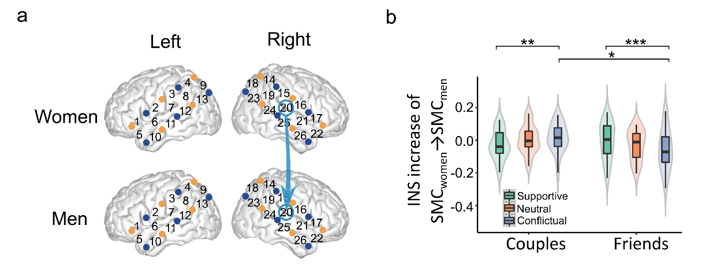


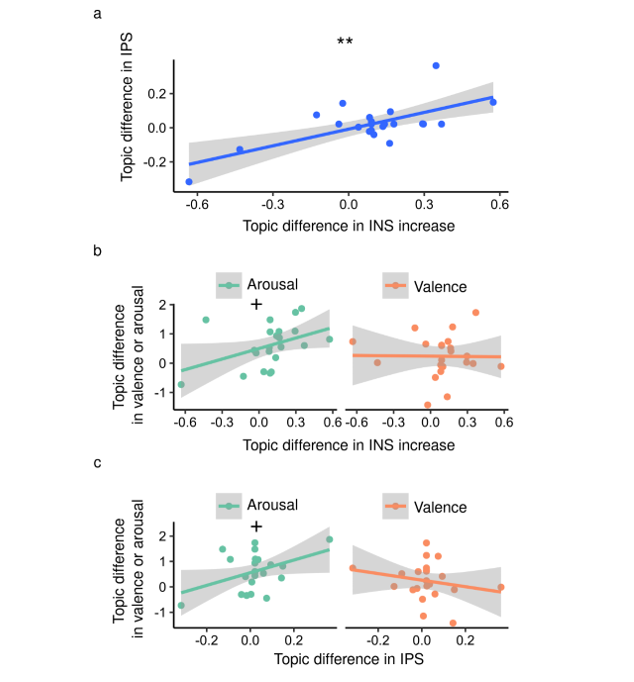


The study further examined the role of gender as well as communication modality (verbal and nonverbal). It was found that couples' verbal communication in conflict interactions induced stronger brain synchronization compared to nonverbal (Figure 5a). And, the time lag intervals of brain activity synchronization between men and women were highly consistent with the discursive intervals of female-initiated and male-responsive words (Fig. 5b-d), thesuggests that women may play a dominant role in conflict interactions through verbalization, and that the synchronization of brain activity it induces also primarily influences women's perceived intensity of love relationships.
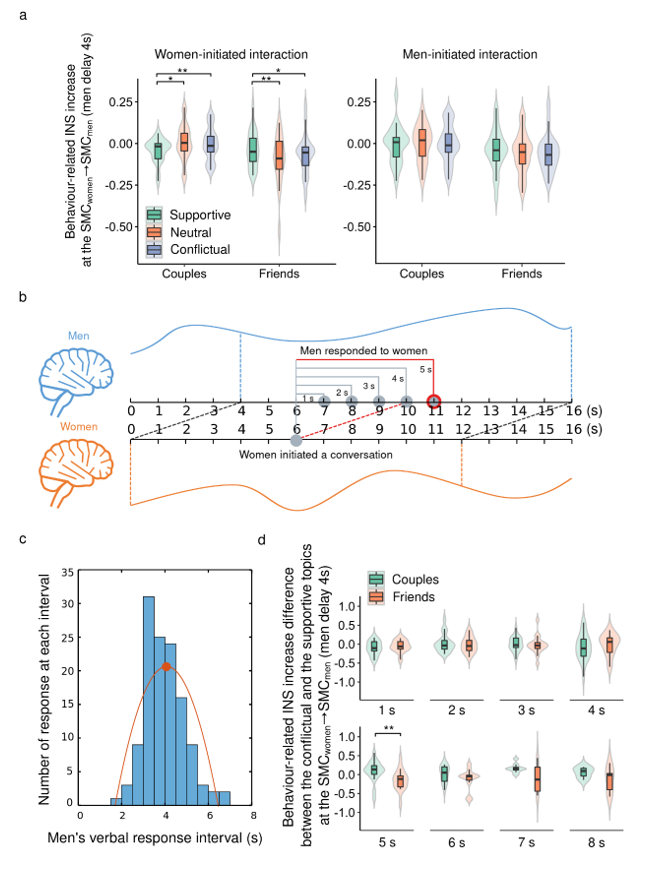


Long, Y. , Chen, C. , Wu, K. , Zhou, S. , Zhou, F. , & Zheng, L. , et al. (2021). Interpersonal conflict increases interpersonal neural synchronization in romantic couples. Cerebral Cortex. bhab413, https://doi.org/10.1093/cercor/bhab413
Neural mechanisms of tactile communication for intimacy
Chunming Lu's group at the State Key Laboratory of Cognitive Neuroscience and Learning, Beijing Normal University, published inCerebral CortexJournal research paper, "Interpersonal Neural Synchronization during Interpersonal Touch Underlies Affiliative Pair Bonding between Romantic Couples,Revealing the mechanism of interbrain neural synchronization of tactile communication for the development of intimate relationships between couples.
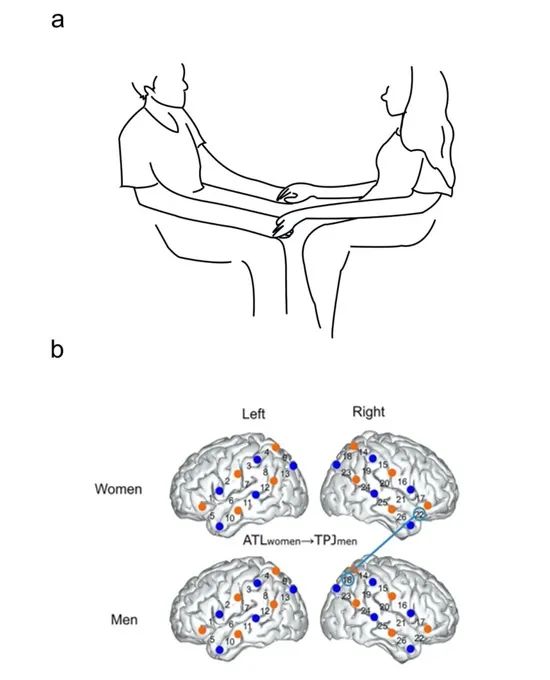


Fig. 1 Experimental setup and main results
The study recruited 22 couples and 22 heterosexual friends. Each pair of couples or opposite-sex friend subjects completed either a hand-holding or oral communication task during the experiment(Figure 1a). The study utilized an ultra-scanning technique based on near-infrared spectroscopic imaging (fNIRS), theFunctional brain activity was also measured in two subjects from each group..It was found that couples were more synchronized in their functional brain activity during hand-holding, and their level of synchronization was significantly higher than that during oral communication; however, the opposite pattern was observed in the opposite-sex friend group, where the synchronization of brain activity during oral communication was significantly higher than that during hand-holding.Moreover, brain synchronization between couples was positively correlated with the intensity of intimacy between couples. TheseThe results show that, different types of social relationships may prefer different types of interactions.Tactile communication that conveys ambiguous information may be more appropriate within intimate relationshipsThe spoken word, which conveys precise information, may be more appropriate for communication within a non-intimate relationship.
The results further revealed that, when there is a 2-4 second time difference in brain activity between males and females (males are later than females).Interbrain synchronization was at its strongest and significantly correlated with men's emotional empathy, suggesting that men's emotional empathy enables men's brain activity to better follow women's psychological changes and their corresponding brain activity and modulate the facilitating effect of handholding on intimacy.
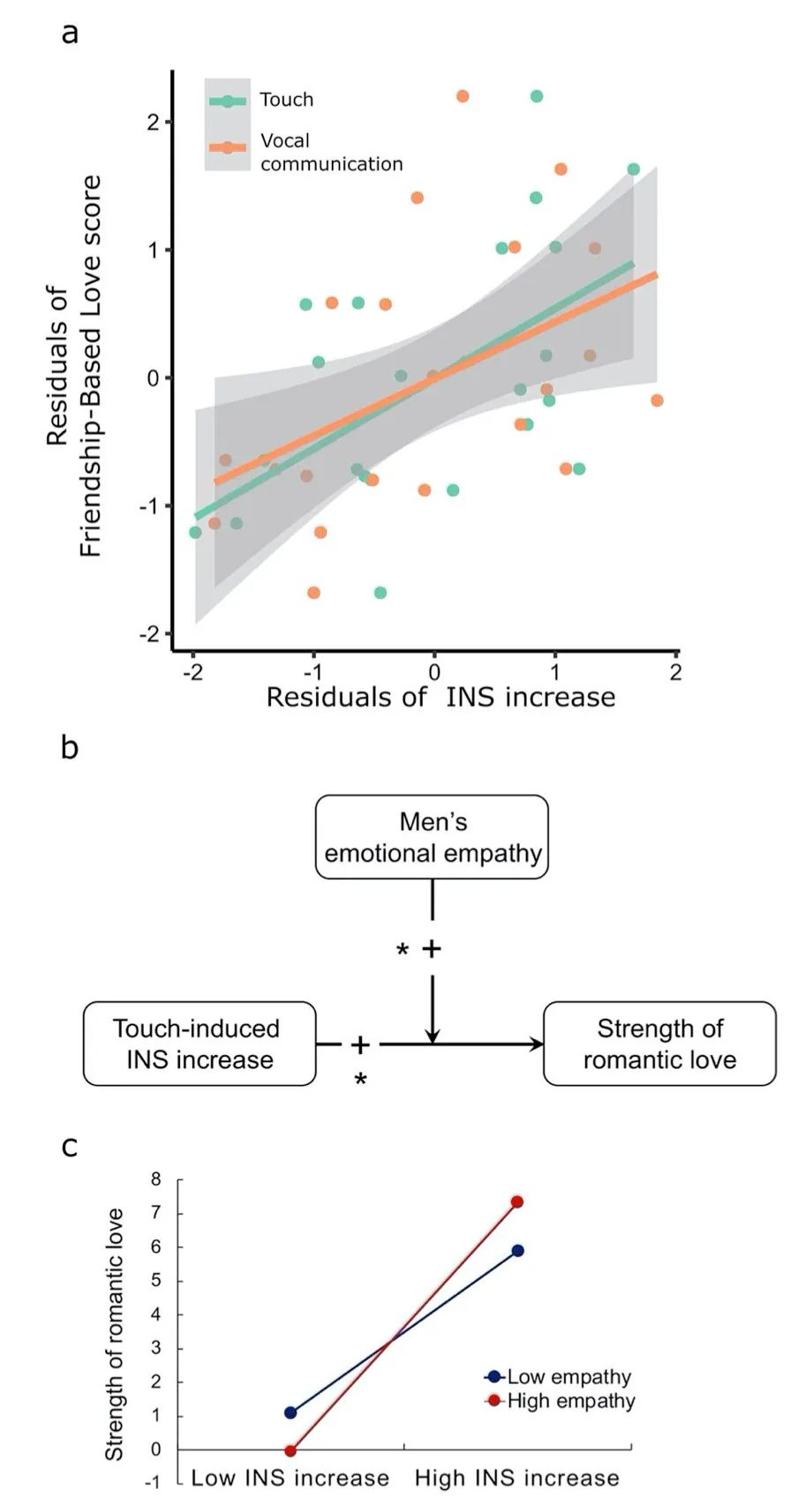


The results of this study also support and further extend the cognitive-neurological hierarchical model of interpersonal communication (see https://mp.weixin.qq.com/s/N56g_EYRETD5nUnXAgHQqQ), suggesting that communication across different perceptual channels, including spoken language and body language, contributes to the establishment and development of social relationships, but that different modes of communication are respectively appropriate for different types of social relationships.
Article Link:
![]()
![]()
![]()
Neurological evidence that love makes us more creative


A study by Prof. Navy Duan's group at the Key Laboratory of Modern Teaching Technology of the Ministry of Education, Shaanxi Normal University, ChinaThe impact of love on creativity is explored. The study was publishedInSpringer LinkofCurrent PsychologyMagazine.The results of the study showed that the lovers' group was usually able to work together better than the strangers' group in collaborating on a creativity task.
![]()
![]()




Previous research by a number of psychologists has shown that people in romantic relationships tend to perform better in creative endeavors. However, most of the subjects recruited in these studies were limited to individuals in or out of romantic relationships, and creative collaboration between lovers was not examined.




In real life, lovers often need to cooperate and work together to solve problems. True love is an expression of being creative. Therefore, the focus of this research study was geared towards exploring the mechanisms of how lovers collaborate with each other on creative tasks and whether their collaboration differs from that of strangers or individuals who are not romantically involved with each other.Since lovers often work with each other, they may also perform better at collaborative creative tasks.Therefore, the presentThe research hypothesis was that cooperation significantly improves creativity in two-person interactions. This hypothesis was tested by examining the cooperative performance of the lovers' and strangers' groups in a creativity task.



experimentsSubjects were divided into two combinations of lovers and strangers, male and female, and were asked to complete a group creativity task, a realistic problem solving task(Realistic Presented Problems, RPP)(Several studies have demonstrated that this task is effective in examining individual or group creativity. The task is actually a real-life contextual divergent thinking task. (The task was chosen because lovers may be more likely to encounter similar problems in real life, which makes our findings ecologically valid)


In this study, brain activity was recorded simultaneously while subjects completed a creativity task using a functional near-infrared optical brain imaging (fNIRS)-based hyperscanning technique. This technique allows subjects to engage in a range of free activities and allows for the recording of cortical activity in more ecologically valid contexts.Previous studies have found that enhancement of the IBS when group members complete a joint task can indicate greater cooperation between the parties. In addition, neuroscience studies have shown that the prefrontal lobe (PFC) and the right temporoparietal joint region (r-TPJ) play a key role in social interaction and the cognitive process of group creativity. Therefore, this study focused on changes in the frontal and right temporoparietal joint regions of group members during the completion of a creativity task.
Based on the brain signals captured by fNIRS, the inter-personal brain synchronization (IBS) of the group members participating in the experiment was computed to reflect the coherence between the subjects' brain signals.The IBS reflects the similarity in the activation of the brain regions between the two group members, i.e., it can be examined to what extent the peers put the same effort into the current task. to what extent peers put the same effort into the task at hand.





The fNIRS data showed a significant increase in interbrain synchronization in the frontal pole cortex (channel 10) and the right temporoparietal joint area (channel 16) in the lovers' group compared to the strangers' group.
Image credit: Duan et al., 2020.


In addition to emphasizing the possible benefits of romantic relationships for engaging in creative collaboration, this study did not find gender differences. In other words, romantic partners performed similarly in solving creative tasks together.
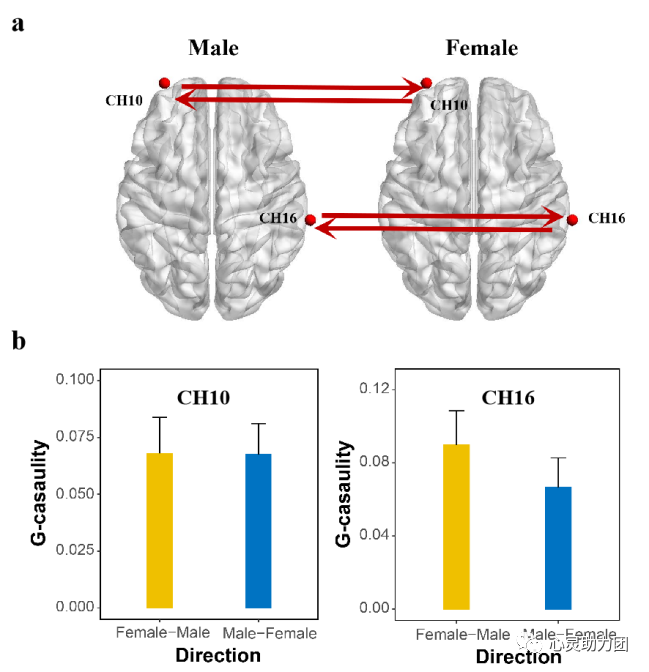

Intercerebral directional coupling in the lover group.
(a)) interbrain synchronization in the direction (from male to female and from female to male) in the frontal pole cortex (channel 10) and the right temporoparietal joint area (channel 16).
(b) Mean Granger causality between the two directions. The above fNIRS results indicate that there is no gender difference in the direction of interbrain synchronization in the lovers' group. Image credit: Duan et al., 2020.



A glimpse, a lifetime of love
"The Tang Dynasty poet Li Shangyin once left such a famous line for the ages: Without the wings of a colorful phoenix, one's heart is in tune with the other. Is it true that lovers in passionate love have the same heart and mind, and are highly in tune with each other in the process of processing tasks? The development of near infrared (NIR) technology provides a powerful technical support for revealing the processing mechanism of creative problem solving between lovers. To paraphrase this ancient poem, like a figurative metaphor, it is very interesting that modern science and technology have inserted a pair of wings to reveal this interesting phenomenon, and are able to show the process of heart-to-heart between lovers externally!"
"It is true, as Alfred Tennyson, one of the most popular and distinctive poets of Victorian England, said, 'Love is buried deep in the heart and does not dwell above the lips.' In this sense, the two-person hyperscanning technique is the perfect tool to show us the love that lies deep in the heart for our enjoyment."
![]()
![]()
This study found many interesting results. Overall, falling in love or working together out of love seems to open the door to creativity. This finding also inspires us to further explore the effects of different types of relationships (e.g., parent-child relationships, friendships, etc.) on creativity.After the article is published online, theMedical Xpress.Ethical Editor, , ,My Best Medicine, , ,Contentisfortheweakand other media outlets and websites reported on the research.
Relationships promote creativity in individuals, which in turn makes them better adapted to life, and don't you still want to taste the sweet taste of love?"





Previously - testimonials
The 17th issue of [fNIRS Journal Club] (Academic Exchange Report organized by Dr. Xu Cui) invited Mr. Chunming Lu and his team to share the
The results of the study "fNIRS hyperscanning for the study of romantic relationships" can be viewed by opening the link.
Web Link:https://v.youku.com/v_show/id_XNTEyODIzMzcyNA==.html
fNIRS House
Add administrator by scanning the code
Networking with peers






You guys, dot dot dot."Watching."Give me some power.








































